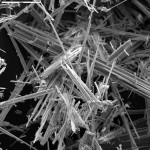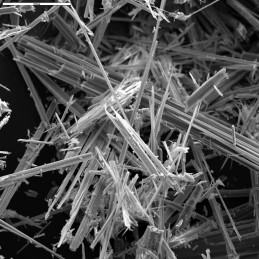 Izell, Union Carbide, Joint Compound, Asbestos & Mesothelioma: A recent case in the Court of Appeals of California, Second District, Division Three ruled on an appeal of a verdict.
Izell, Union Carbide, Joint Compound, Asbestos & Mesothelioma: A recent case in the Court of Appeals of California, Second District, Division Three ruled on an appeal of a verdict.
The Izell, Union Carbide, Joint Compound, Asbestos & Mesothelioma case documents what many construction industry workers and people in the construction industry may face today – past potential direct and secondary exposure to asbestos and mesothelioma. The court ruled on the appeal.
To find out more on the case, see Case No. B245085 – October 22, 2014.
A brief summary of the facts include:
- Union Carbide purchased an asbestos mine near Coalinga, California in 1963.
- Until 1985, Union Carbide supplied asbestos to companies that manufactured and marketed products for the construction industry.
- Mr. Izell owned a construction business that built approximately 200 homes in southern California from 1964 until 1994.
- Mr. Izell did not work as a laborer or supervisor on these projects, but he regularly visited and walked through the construction jobsites. All the homes were constructed with drywall interiors.
- Mr. Izell’s workers applied various brands of premixed joint compound to cover nail heads, fill the seams between drywall boards, and fill corner sections of drywall.
- Once the joint compound dried, the workers sanded it one to three times, usually with sandpaper on a long pole, then by hand.
- Mr. Izell often was present when his workers sanded the joint compound. He described the resulting dust as a “little fog in the air.” He also recalled breathing dust that was disturbed when his workers swept the excess joint compound from the floor.
- Mr. Izell’s workers also used gun plastic cement to apply stucco to the homes’ exterior. Mr. Izell was present when his workers tore open bags of gun plastic cement, and he breathed the dust from those products as well.
- Mr. Izell recalled seeing four different brands of joint compound on his jobsites and two brands of gun plastic cement.
- Of the joint compound brands, Mr. Izell believed Georgia Pacific was the most common brand because it was the “dominate seller in those days,” followed by Hamilton Red Dot, Kaiser Gypsum, and Kelly-Moore’s Paco brand. Mr. Izell also saw his workers use Riverside and Colton gun plastic cement.
- At varying times from 1970 to 1978, Union Carbide supplied asbestos to each of the four joint compound manufacturers and to Riverside for use in its gun plastic cement.
- In July 2011, at the age of 85, Mr. Izell was diagnosed with mesothelioma. Initially, Plaintiffs sued more than 20 defendants who were allegedly responsible for the asbestos-containing products to which he claimed he was exposed.
- By trial, only five defendants remained, including Union Carbide, one joint compound manufacturer (Kaiser Gypsum), one stucco manufacturer (La Habra) and two gun plastic cement manufacturers (Colton and Riverside).
For more on asbestos and mesothelioma, please visit the links below:
- An Overview
- Asbestos Connection
- Exposure to Asbestos
- Signs and Symptoms
- Diagnosis/Staging and Treatment
- Go To Asbestos
- Resources
- Asbestos & Mesothelioma News
At the Gooch Law Firm, we pride ourselves on providing our clients reliable representation for even the most challenging cases. If you have been diagnosed with mesothelioma, and need an asbestos or mesothelioma lawyer to help you file a mesothelioma lawsuit, contact our office at 1.844.329.5955.
WE ARE HERE TO HELP YOU PROTECT YOUR LEGAL RIGHTS

